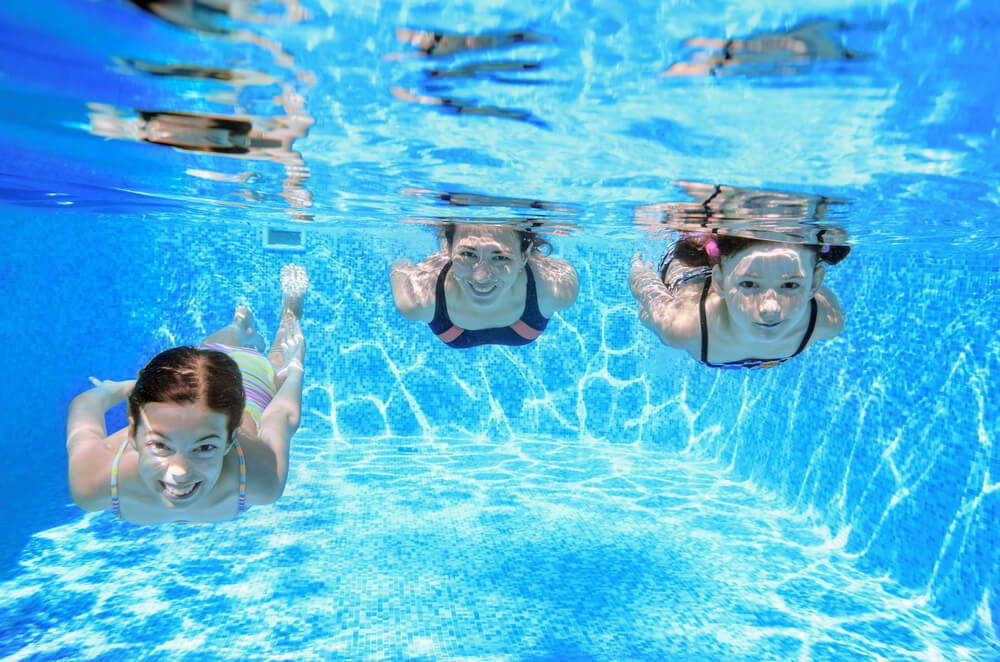Don’t Let Illness and Injury Ruin Your Summer – Learn these 10 Pool Safety Tips for Summer Today!
With the approach of hot summer days, pool safety tips come into sharper focus. Soon after Memorial Day, pool covers start coming off and public pools are officially opened for summertime enjoyment. While jumping into a cool pristine pool is no doubt, one of the season’s ultimate pleasures, it is important to take time to review some pool safety tips for summer. This includes tips to prevent any near or fatal drowning as well as swimming pool hygiene and safety to ward off bacterial infection from swimming pools.
10 Pool Safety Tips for Summer
1. Maintain a healthy water environment to prevent bacterial infection from swimming pools.
This includes regular water testing in order to achieve safe water PH levels. It is also important to follow manufacturers’ directions for proper use and storage of chemicals.
2. Restrict easy access to the swimming pool area.
This may necessitate the installation of a pool enclosure or fence around the perimeter of the pool. Any gate or entrance in the enclosure that provides access to the swimming pool should be installed sufficiently high to be out of the reach of small children. Also, keep doors leading out to the pool area adequately secured at all times. Installing a pool alarm that can alert when children wander too close to the pool area without adult supervision provides another layer of pool safety.
3. When the pool area is not being used, remove items that would attract small children such as toys, inflatable floaters, bicycles and tricycles or any electrical appliances or electronic devices.
4. Kids require undivided adult supervision when using the pool.
Data suggest that drowning in private pools is one of the leading cause of death during the summer for young children under the age of five.
5. Avoid the use of alcohol and drugs while engaging in pool activities especially with young children in attendance.
6. Teach children to swim as soon as possible.
Although knowing how to swim is not a guarantee against pool accidents, being able to swim can help to reduce the risk of drowning. In some instances, swimming lessons has been instrumental in helping a strong swimmer to come to the rescue of someone else to prevent a pool tragedy.
7. Acquire pool safety and rescue equipment and instruct adults and older children in their use.
It is also helpful to keep a first responder kit in the vicinity of the pool area.
8. Remove anything that would obstruct a clear view of the pool such as shrubs, bulky pool furniture, clothing or towels hung over the pool fence or railing.
9. Make regular checks of pool covers and furniture to ensure that they are in good working condition.
10. Set down some specific pool safety guidelines.
Be sure to go over these with everyone that will have access to the pool and keep it posted where it is easily seen. These can include general pool safety reminders, times of access, proper pool conduct such as no diving in shallow waters, staying away from drain covers, never swimming alone, no running by the pool and what to do in an emergency to name a few.
According to data from the Centers for Disease Control and Prevention (CDC) an estimated ten people die from unintentional drowning accidents every day. Of these, two are children aged 14 or younger. Also, more than 50% of drowning victims that are treated in emergency rooms in the United States require hospitalization or further care due to severe injuries to the brain or long-term disabilities such as memory problems, learning disabilities, and permanent loss of basic functions.
It is important to teach water safety and respect for the water to children as early as possible. Toddlers and young children should be taught to never enter a pool area without adult supervision. Older kids should understand the importance of respecting the safety of others and that certain types of games in the water can be dangerous for those who are just learning or have not yet learned how to swim. It is also important for adults to recognize that inflatable devices such as arm wings for children can pop or deflate and are therefore not life-savers.
Learning the facts about swimming pool safety regulations, public swimming pool hygiene and safety, and the danger of swimming pool drowning in above ground or inground pools can help to keep everyone safe and heighten summer fun.
Sources:
http://www.redcross.org/images/MEDIA_CustomProductCatalog/m4240223_PoolSafety.pdf
https://www.cdc.gov/homeandrecreationalsafety/water-safety/waterinjuries-factsheet.html
https://www.cdc.gov/homeandrecreationalsafety/water-safety/waterinjuries-factsheet.html
